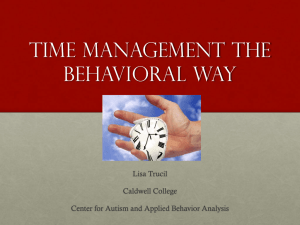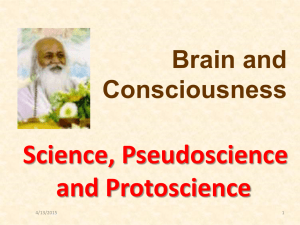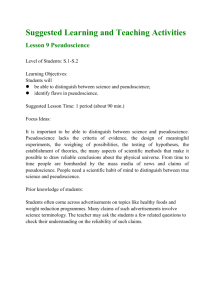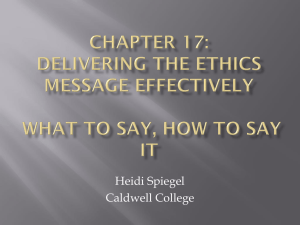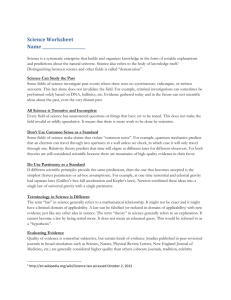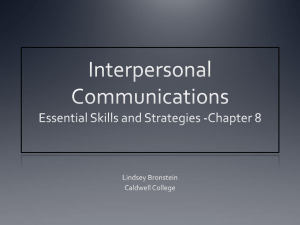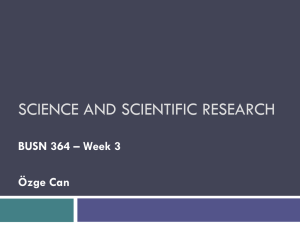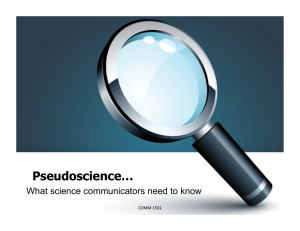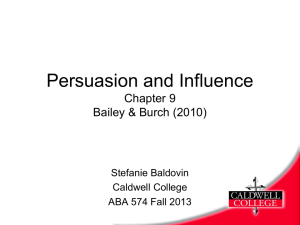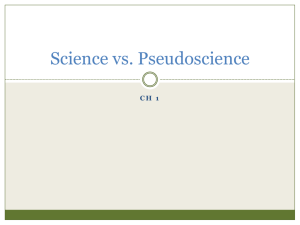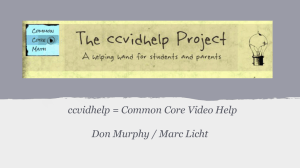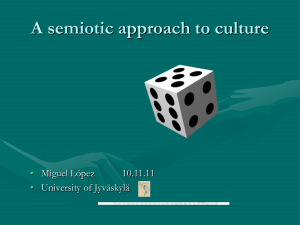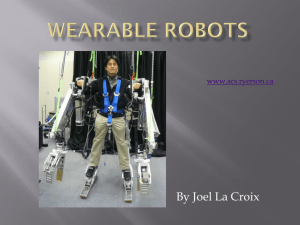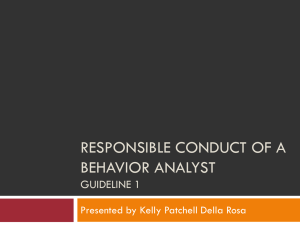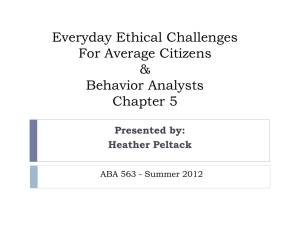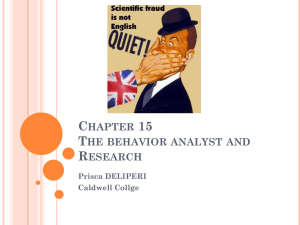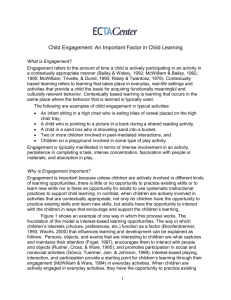Chap 18 Becoming a Trusted Professional - Stefanie
advertisement
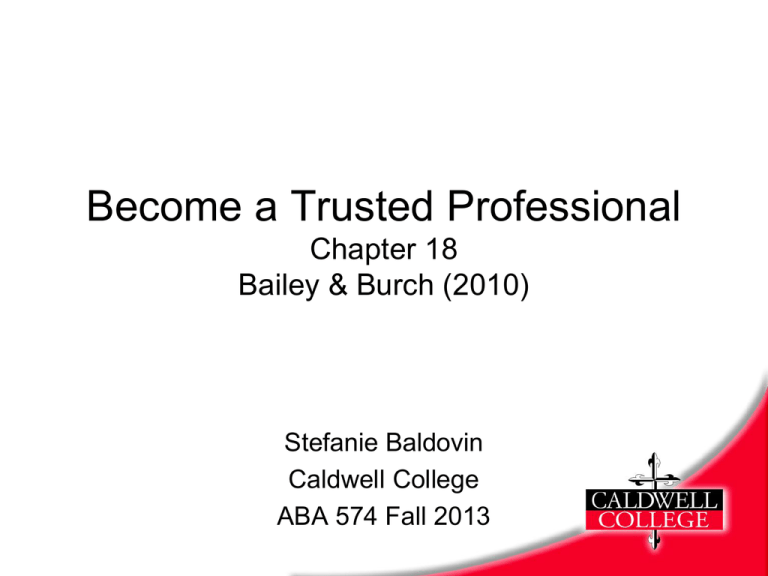
Become a Trusted Professional Chapter 18 Bailey & Burch (2010) Stefanie Baldovin Caldwell College ABA 574 Fall 2013 Sources • Bailey, J., & Burch, M. (2010). 25 essential skills & strategies for the professional behavior analyst. New York, NY: Routledge. • Harvard Business School Press. (2005) Power, influence and persuasion. Boston: Author • Autism Speaks website http://www.autismspeaks.org Overview • Achieving Trust • Developing Trust • Trust – Transparent – Receptive – Use caring – Sincere – Trustworthy Overview • Why is being a Trusted Professional is essential for Behavior Analysts? As Sharon Reeve says: We are always being judged! How do you treat others? Are you attentive? Aloof? You Tube Video Jack Welch – former General Electric CEO aka “Neutron Jack” http://www.youtube.com/watch?v=hntzp5F40I The optimistic intern! • Some Examples of Lack of Trust Trust • “Trust is the glue of life. It's the most essential ingredient in effective communication. It's the foundational principle that holds all relationships.” – Stephen Covey • “To earn the trust of others, you need to demonstrate a steady, consistent temperament and be honest and reliable”. Harvard Business School Press. (2005) Achieving Trust • Difficult to achieve • Requires time investment • Built slowly, through smaller milestones ; – Solve simple problems – Be on time – Deliver what you promise – over deliver – Be sensitive to others Developing Trust • Our daily interactions provide these opportunities; – Accurately collecting data during sessions – Participate in meetings – Help make a decision about treatment – Meet your team’s expectations How can Behavior analysts earn trust to offer recommended treatments? • • • • Thoughtfully consider the issues Do research Keep confidences Deliver on promises Transparent • Be candid • Tell both sides of the story • Having a poker face makes people uneasy Be Responsive • The Intern’s supervisor was not responsive – a lost opportunity • Mentor with a heart • Give timely positive feedback – opportunity to build trust and caring • Give timely negative feedback – factual, constructive Use caring • Establish an open environment – Do not interrupt – Make eye contact • Present other’s viewpoints first • Exercise caution with language and gestures Be Sincere • Todd Risley – in 1968 he showed ways of teaching pre-schoolers to tell the truth by shaping their “Say Do” congruence Trustworthy • Credibility = Trust + Experience Harvard Business School Press, 2005 • “A good reputation takes 20 years to build and only five minutes to ruin.” Warren Buffet What/who could affect trust in our profession? • • • • • • Unethical practitioners Incompetent practitioners Celebrities (Jenny McCarthy) Parents/Caregivers School administrators Pseudoscience /Alternative Treatments Pseudoscience erodes trust • Pseudoscience includes beliefs, theories, or practices that have been or are considered scientific, but have no basis in scientific fact – 5-year old Pennsylvania boy who, in 2005, reportedly died following complications from chelation therapy – In 2000 a young girl in Colorado died from suffocation during “rebirthing,” Pseudo science • • • • Red flags Using exaggerated language, especially "miracle" Does not share clinical data supporting its claims Not open to discussion or scrutiny Takes criticism as a personal attack Pseudo science • • • • • Testing cannot be repeated or verified Poorly organized concepts Contradictions Lack of progression Relies on testimonies instead of empirical research • "Proof" is not published in peer-reviewed scientific journals, but in newsletters, books, advertisements, and websites More Pseudoscience • http://www.autismspeaks.org/node/1129 26 • http://www.youtube.com/watch?v=R3UJ rr8PeTs In Closing – As behavior analysts we need to be seen as trusted professionals so that the programs we present are given adequate support to benefit our clients – Go above and beyond what is expected to help others – Build credibility everyday! (Bailey & Burch, 2010) Questions Additional Reading References Bailey, J., & Burch, M. (2010a). 25 essential skills & strategies for the professional behavior analyst. New York, NY: Routledge. Harvard Business School Press. (2005) Power, influence and persuasion. Boston: Author Risley, T.R., & Hart, B. (1968) Developing correspondence between the non-verbal behavior of pre-school children. Journal of Applied Behavior Analysis, 1 (4), 267-281 Youtube website http://www.youtube.com/watch?v=hntzp5-F40I
